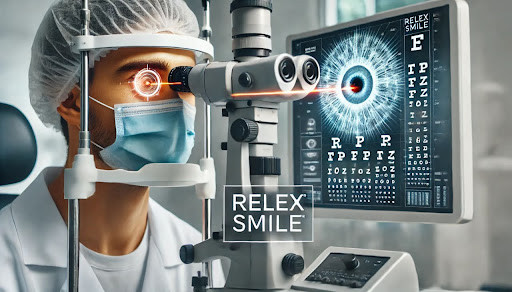Ophthalmology Basics: Understanding Eye Health and Vision Disorders
Ophthalmology, the branch of medicine focused on the anatomy, function, and diseases of the eye, plays a critical role in preserving vision and overall well-being. Eyes are complex sensory organs that allow us to perceive the world, and their proper care is essential for maintaining quality of life. From detecting vision problems early to treating serious conditions like glaucoma and macular degeneration, lasik surgery ophthalmologists serve as vital healthcare providers in the modern medical landscape. Understanding the fundamentals of ophthalmology helps individuals take proactive steps toward maintaining lifelong visual health.

At the core of ophthalmology is the detailed understanding of the eye’s structure and how each part contributes to vision. The eye includes key components such as the cornea, lens, retina, optic nerve, and vitreous humor. The cornea and lens work together to focus light on the retina, where photoreceptor cells convert it into electrical signals sent to the brain via the optic nerve. Even a slight change in the shape of the cornea or the flexibility of the lens can result in common refractive errors like myopia (nearsightedness), hyperopia (farsightedness), and astigmatism. These issues are usually corrected with glasses, contact lenses, or refractive surgeries like LASIK or PRK.
Eye health is influenced by various internal and external factors. Age is a significant contributor, as vision typically begins to decline due to conditions like presbyopia, which makes it harder to focus on close objects. Exposure to ultraviolet (UV) rays, smoking, poor nutrition, and systemic diseases such as diabetes and hypertension can also negatively impact eye health. Regular eye exams are essential because many eye disorders develop silently without early symptoms. Comprehensive eye tests can detect hidden problems and prevent progression before irreversible damage occurs. Ophthalmologists use a variety of diagnostic tools, including slit-lamp exams, optical coherence tomography (OCT), and tonometry, to assess eye structure and intraocular pressure.
Among the many vision disorders treated by ophthalmologists, cataracts and glaucoma are particularly prevalent. Cataracts are characterized by the clouding of the eye’s natural lens, often caused by aging or trauma. They can lead to blurry vision, glare, and eventual blindness if untreated. Surgical removal of the cloudy lens and replacement with an artificial intraocular lens (IOL) is a safe and highly effective procedure. Glaucoma, on the other hand, is a group of conditions that damage the optic nerve due to increased intraocular pressure. It is a leading cause of irreversible blindness and often presents no symptoms in its early stages. Management includes medications, laser therapy, or surgery to lower eye pressure and preserve vision.
Another major area within ophthalmology is retinal disorders, such as diabetic retinopathy and age-related macular degeneration (AMD). Diabetic retinopathy results from damage to the retinal blood vessels due to prolonged high blood sugar levels. Early signs include floaters and blurry vision, but in advanced stages, it can cause severe vision loss. AMD, common in individuals over 50, affects the macula—the central part of the retina—and leads to loss of central vision. While there is no cure, treatments such as anti-VEGF injections, laser therapy, and lifestyle changes can slow its progression. Ophthalmologists work closely with patients to monitor retinal health and provide targeted care.
Preventive eye care is essential and begins with awareness and lifestyle choices. Eating a diet rich in antioxidants, wearing protective eyewear, limiting screen time, and managing chronic conditions like diabetes and high blood pressure all contribute to healthier eyes. For children, early eye screening is vital to identify and correct issues like amblyopia (lazy eye) and strabismus (misaligned eyes), which can affect learning and development. Adults should have regular comprehensive eye exams every one to two years, depending on age and risk factors. Staying informed and attentive to eye changes—such as flashes, floaters, or sudden vision loss—can make the difference between effective treatment and permanent damage.
In summary, ophthalmology encompasses a wide spectrum of care from vision correction and preventive screenings to advanced surgical treatments for complex disorders. Understanding the basic anatomy of the eye, common conditions, and available treatments empowers individuals to make informed decisions about their visual health. As technology and research in the field of ophthalmology continue to advance, early diagnosis and treatment options will become even more effective. Protecting one’s vision is a lifelong commitment, and with the guidance of skilled ophthalmologists, achieving and maintaining healthy eyes is well within reach.
